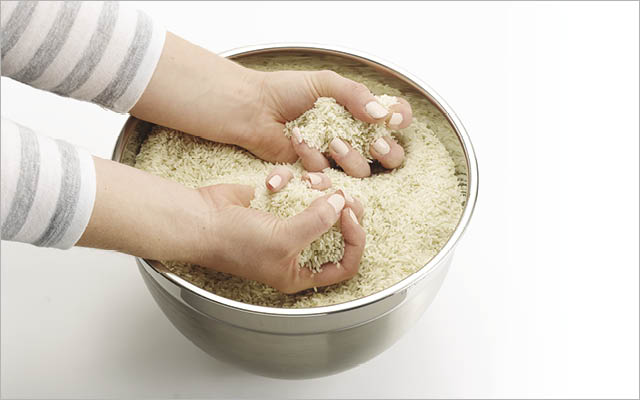Don’t be fooled by the term “tennis elbow.” This painful condition, also known as lateral epicondylitis, can affect anyone who performs repetitive grip-intensive activities, such as knitting, swinging kettlebells, and using a smartphone.
“It usually affects the dominant arm and occurs when there’s frequent and forceful contractions of the wrist extensors, or the muscles that allow us to extend our wrist,” explains Peter Ames, PT, PhD, a Minneapolis-based specialist in sports physical therapy.
Tennis-elbow sufferers will feel pain on the outside of their elbow and forearm that often worsens when they grip.
Unlike many overuse injuries, tennis elbow is not an inflammatory condition; it involves a breakdown of healthy tissue in the muscle and tendon. For this reason, popping an over-the-counter anti-inflammatory, like aspirin or ibuprofen, won’t do much to alleviate symptoms — but therapeutic massage has been shown to be an effective treatment.
Take frequent breaks from activities that trigger pain. If it creeps in while you’re at your computer, step away from the keyboard at regular intervals. If it comes on during a friendly match, build rest periods into your game or take a break from the sport altogether.
For long-term relief, it’s best to incorporate targeted exercises into your routine. Ames suggests these three moves to help relieve pain and to gently strengthen injured tissues to promote healing.
Isometric Wrist Extension
This exercise activates the wrist extensors without shortening or lengthening them. Firing your muscles in a fixed position, Ames notes, is not only less painful, it will actually reduce pain by increasing blood flow to the affected tissue.
Full Instructions
- Rest the affected arm on a flat surface with your palm down and fingers gently curled.
- Place your opposite hand flat on top of your wrist.
- Try to lift your wrist while resisting the motion with your top hand.
- Hold for five seconds and relax.
- Do two sets of 15 reps, twice daily.
Eccentric Wrist Extension With Dumbbell
This move strengthens the wrist extensors while you lengthen them, Ames explains. This promotes healing by helping damaged tissue return to its pre-injury condition.
Full Instructions
- Gently grip a light weight (1 or 2 pounds) in the affected hand.
- Rest that arm on a flat surface so your palm faces down and your wrist relaxes over the edge.
- Maintain a gentle grip on the weight and use the opposite hand to help lift your wrist as far back as you comfortably can.
- Release your helping hand and slowly lower your wrist back to the starting position.
- Perform three sets of 15 reps, twice daily.
Scapular Retraction
While not a wrist or forearm exercise, scapular retractions can help correct a rounded posture, which helps improve the poor arm mechanics that often cause or worsen elbow pain. Shoring up your posture can not only help prevent tennis elbow, says Ames, it can also help improve it.
Full Instructions
- Sit or stand tall with your arms down at your sides.
- Keeping your neck muscles relaxed, gently squeeze your shoulder blades back and down.
- Hold the squeeze for a few seconds and release.
- Repeat five times.
- Perform this exercise several times per day, as desired.






This Post Has 0 Comments